Rare comet Neowise seen over Stonehenge and will be visible for a month
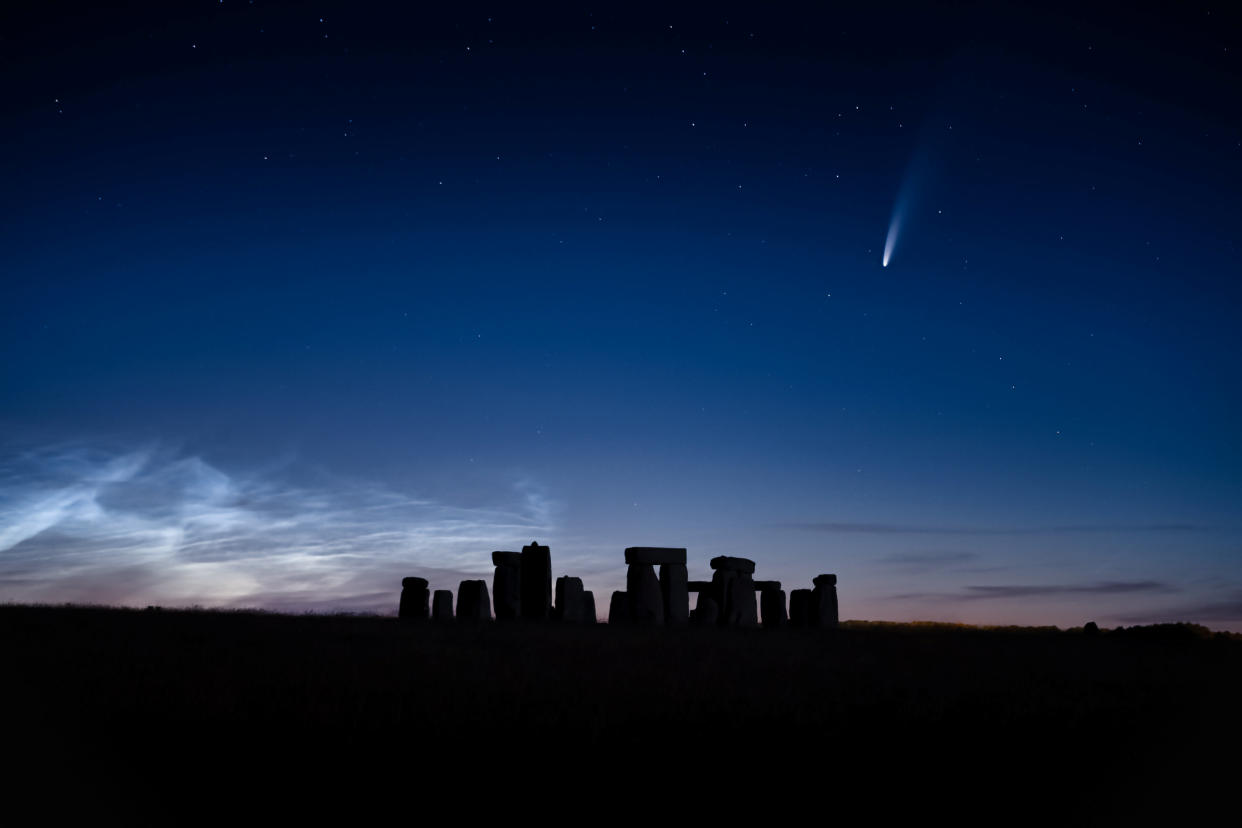
A rare comet that has travelled for 6,800 years has been pictured streaking over Stonehenge on a remarkably clear summer’s evening.
Photographer Matthew Brown, 37, drove nearly three hours from his home to the iconic neolithic stone monument to capture the image, with its backdrop of noctilucent – or “night shining” – clouds.
Brown achieved the breathtaking shot of the glowing comet, nicknamed Neowise by Nasa, on late Friday night.
Neowise has been spotted by stargazers across the UK and around the world as it flies past Earth on its way back to the outer parts of the solar system, which it will reach by mid-August.
The comet will be its closest to the Earth on 23 July but will still be about 64m miles (103m km) away, according to astronomy site EarthSky.
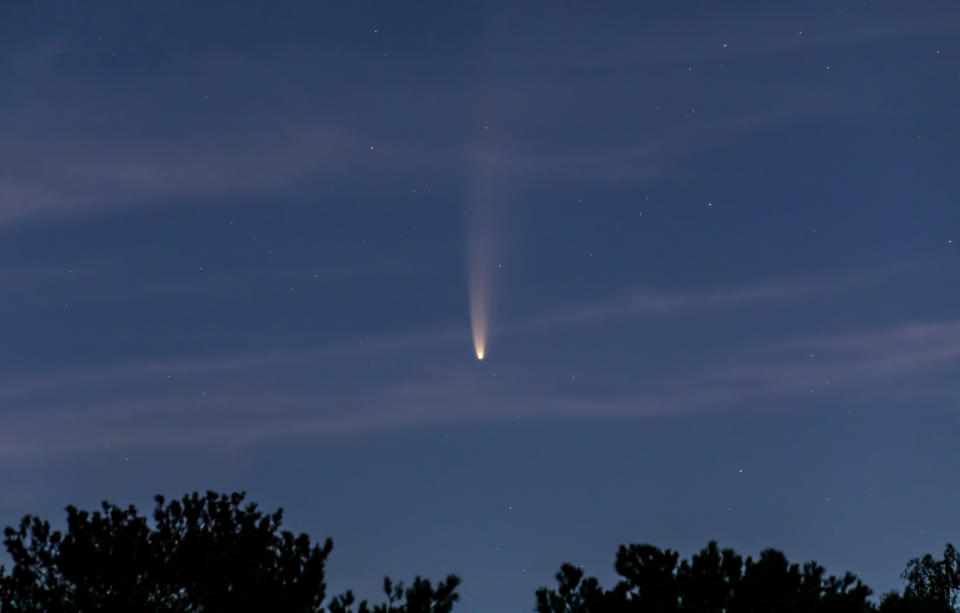
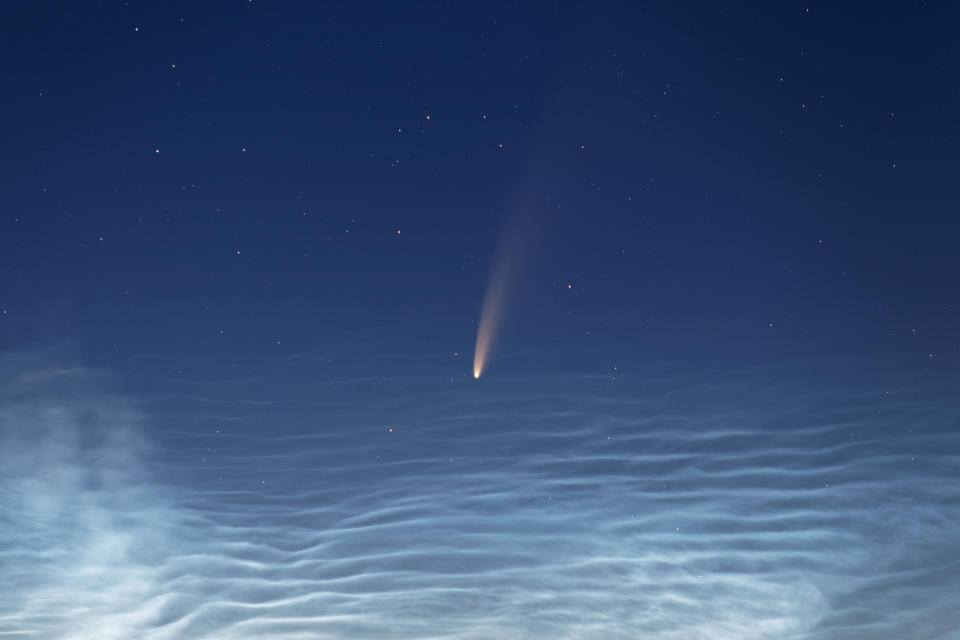
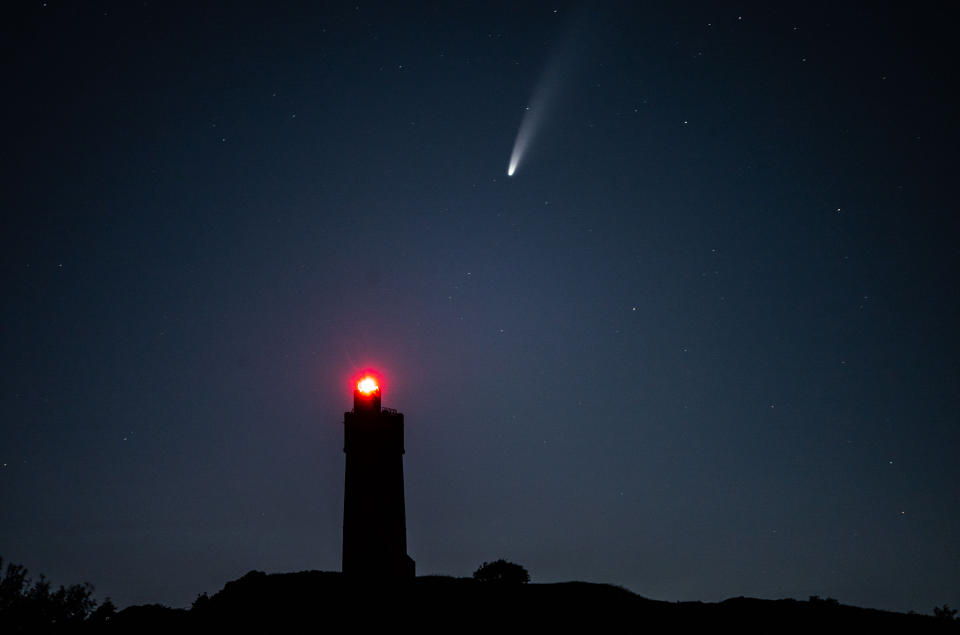
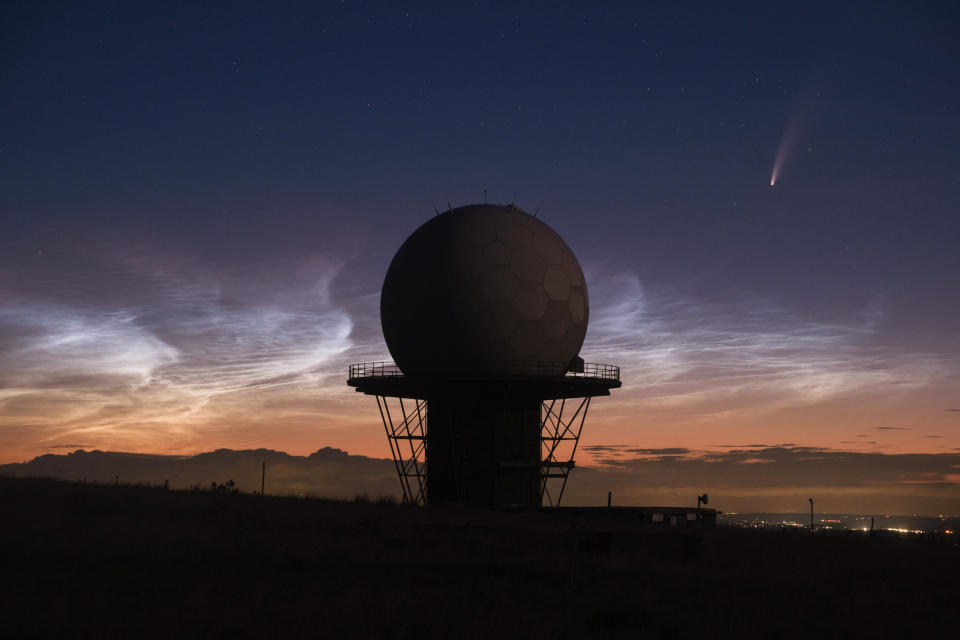
Noctilucent clouds are cloud-like phenomena in Earth’s upper atmosphere.
They consist of ice crystals and are only visible during astronomical twilight.
Craig, from Carmarthern, Wales, said: “I’ve taken thousands upon thousands of shots during my career but this has to be one of my favourites.
Read more: Life on Earth could have arrived on a comet
“I knew it was going to be one of the clearest nights we had so I had to make my way there.
“I live in Carmarthen, I thought it was now or never for me to head there and get myself a photo of a lifetime. I was so happy when I got there because it was simply breathtaking.”
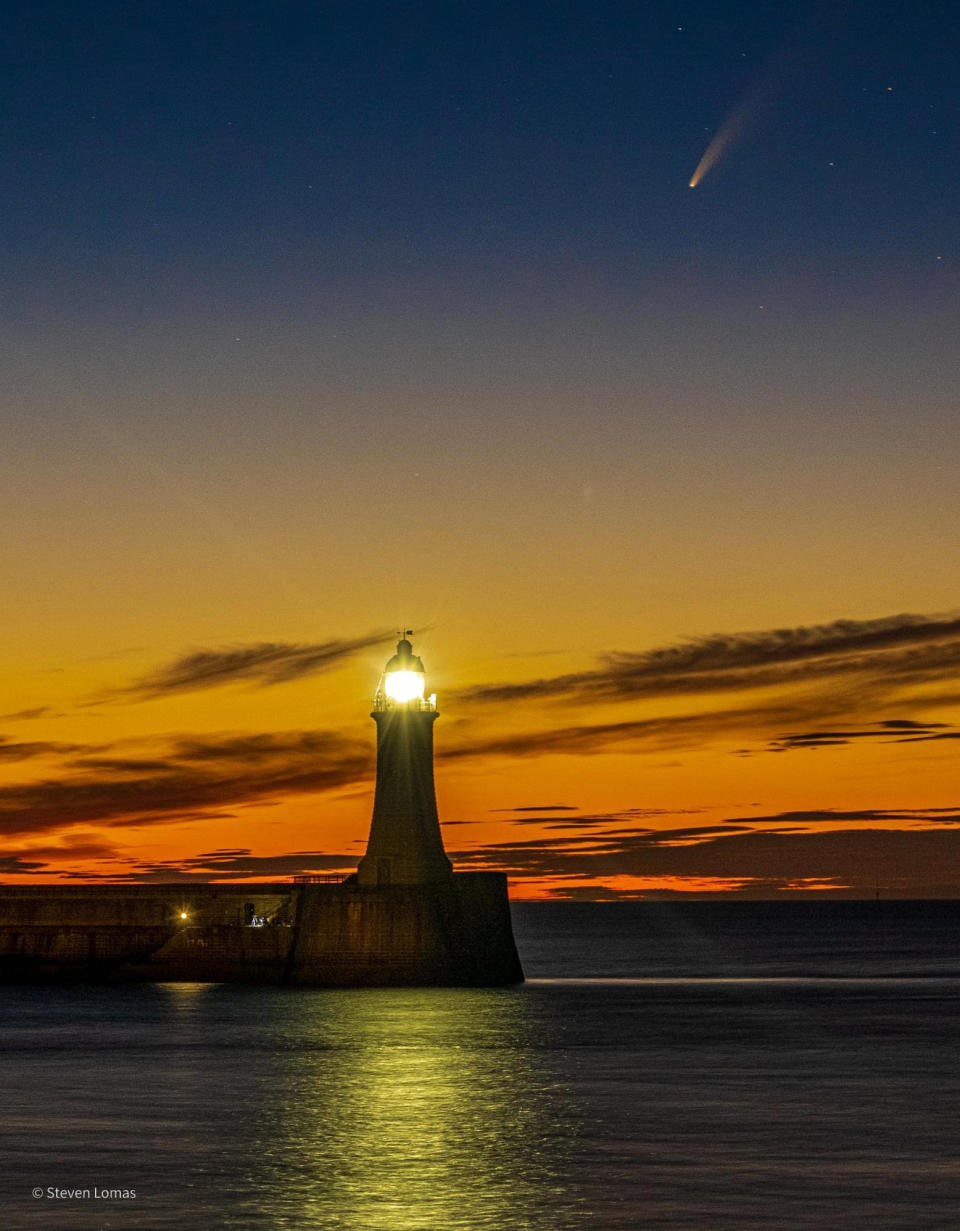
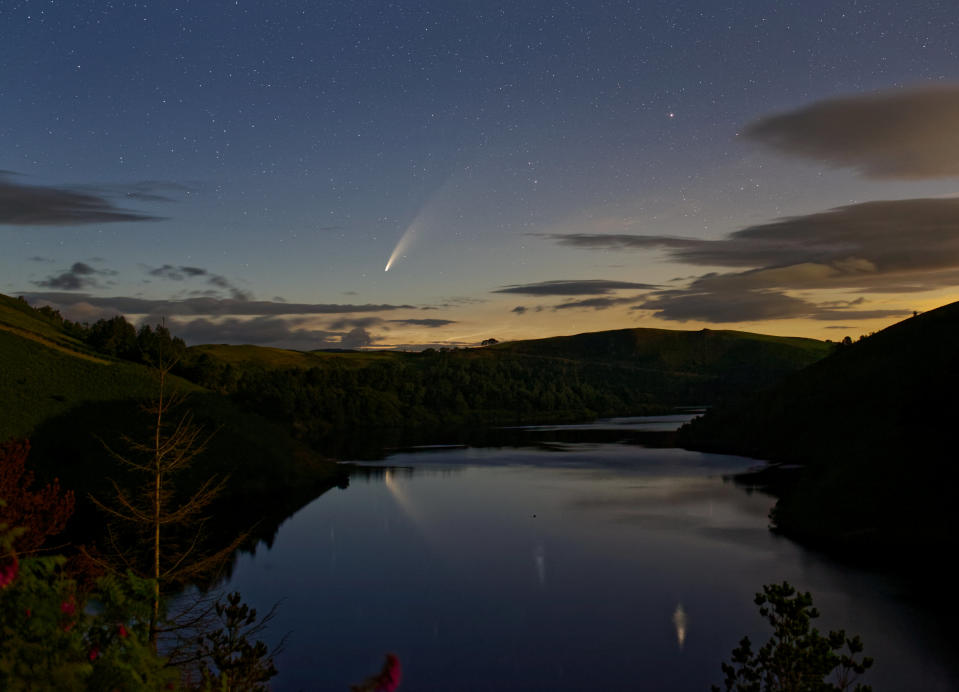
“When I parked up and I saw the clouds I was just amazed.
“I am a professional photographer so I shoot a lot at all hours of the day, but the sky that night was spectacular. It was absolutely worth it. I’d have kicked myself if I hadn’t gone and missed out.”
Read more: Ancient human settlement was destroyed by a comet 12,800 years ago
“The pictures are showing something so unique. You’ve got the comet, the noctilucent clouds, which only appear a couple of weeks a year during the summer, and you’ve got this clear sky.
“It’s not something you see often and to see it all at Stonehenge made it special.”

A comet is a small, icy body that, when passing close to the sun, warms and begins to release gases, a process called outgassing.
This produces a visible atmosphere, or coma, and sometimes also a tail.
Nasa wrote on its Astronomy Picture of the Day page: “As Comet Neowise became one of the few naked-eye comets of the 21st century, word spread quickly, and the comet has already been photographed behind many famous sites and cities around the globe.
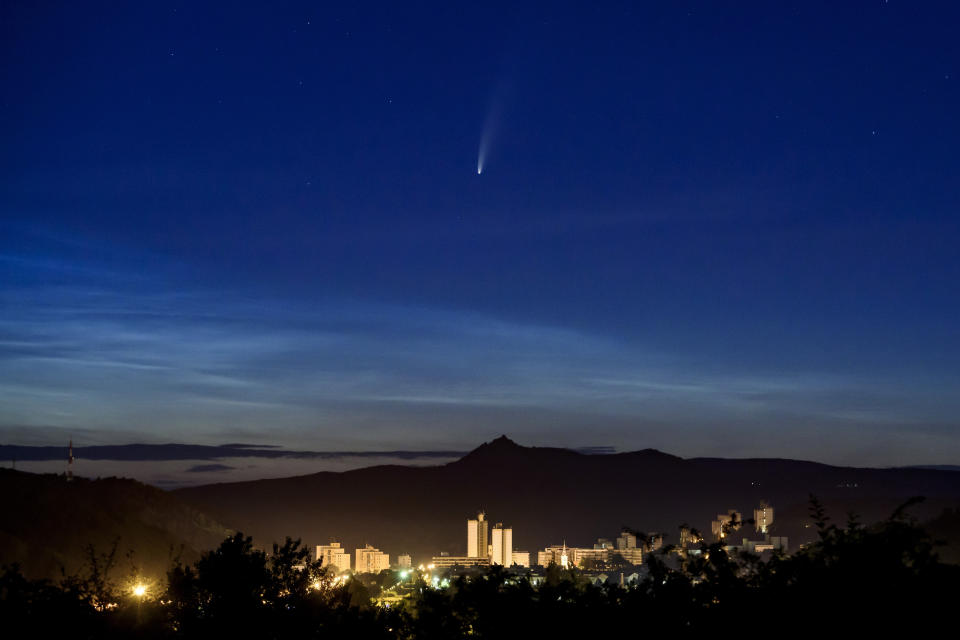
Read more: A comet did it! Mystery of giant crater solved
“The future brightness of Comet Neowise remains somewhat uncertain but the comet will likely continue to be findable not only in the early morning sky, but also next week in the early evening sky.”
EarthSky suggests people bring binoculars, or a good camera.
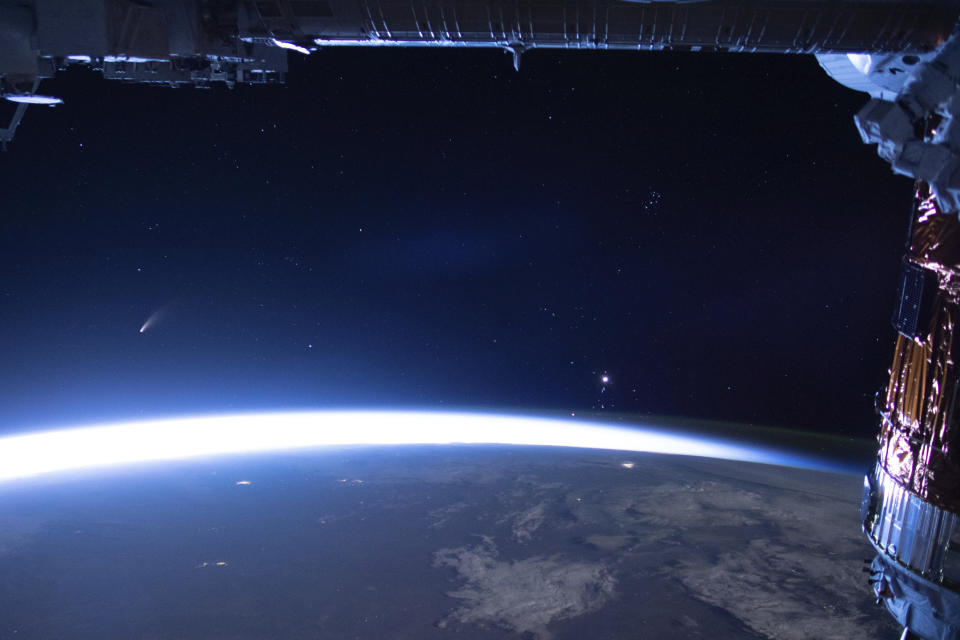
“If you don’t have binocs but do have a good camera, a great alternative is to capture a few seconds long exposure image of the approximate area of the sky. Try at different magnification or zoom settings, and the results should reveal the comet’s nice tail,” the site says.
Once the skies are dark enough, the comet is visible to the naked eye, and looks spectacular through binoculars or a small telescope.
Neowise should be visible from about an hour after sunset by looking in a northerly direction.
The best views – depending on the weather – could come on 22-23 July, when it will make its closest pass to Earth.

